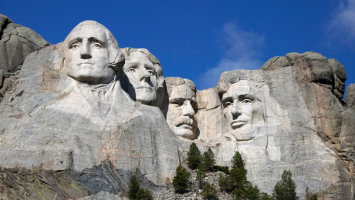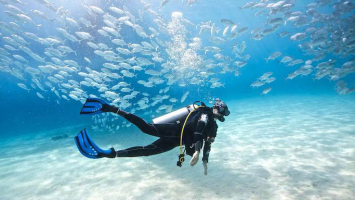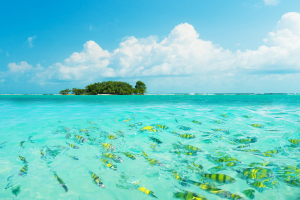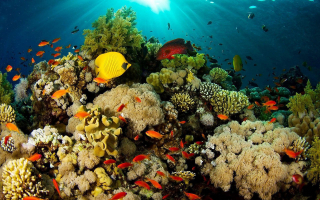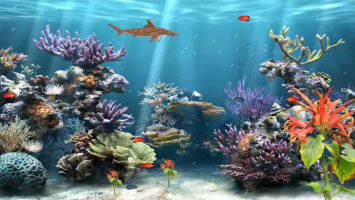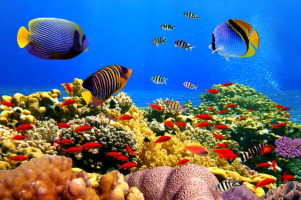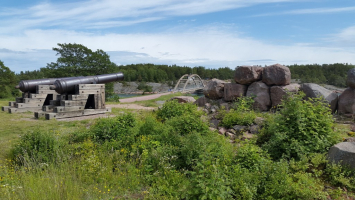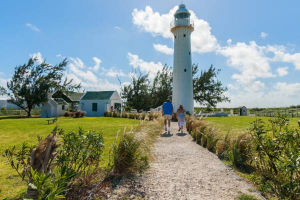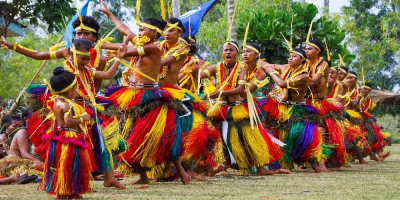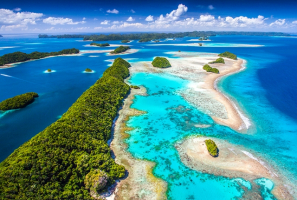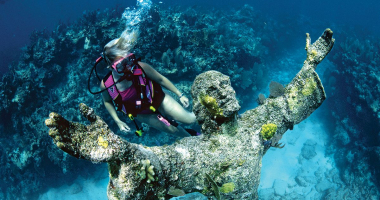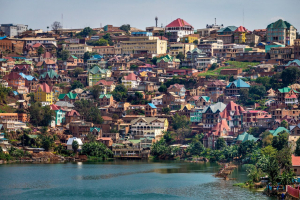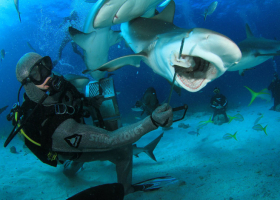Top 11 Most Beautiful Dive Sites In The Federated States Of Micronesia
Micronesia's islands are scattered across the western Pacific Ocean, about 500 miles from the Philippines and Indonesia. These islands may be small, but in the ... read more...world of scuba diving, they are giants. Micronesia has everything a world-class diving destination needs, including WW1 and WW2 wrecks, stunning coral gardens full of hard and soft corals, adrenaline-pumping drift dives, large animal encounters, dramatic walls, over 1,300 species of fish, and incredible surface sites to see. Let's take a look at the most beautiful dive sites in Micronesia.
-
Chuuk Lagoon, about 1.5 hours southeast of Guam, is known as the world's wreck diving capital. Any diver should dive the sunken armada of the Japanese Fourth Imperial Fleet at least once in their lifetime. The sea floor beneath Chuuk Lagoon's warm, clear waters is steeped in history. It is a major WWII shipwreck site, with the hulks transformed into amazing underwater museums and natural wonders, containing the best of the underwater world and maritime history in one location. Dubbed “ship-reefs,” the sites are as colorful as they are compact and offer hours of diving on each wreck.
Chuuk Lagoon have been transformed into ship reefs, holding the very best of the undersea world and maritime history at one site. Divers from all over the world come to see the hard and soft corals in a kaleidoscope of colors and shapes. The large number of artifacts still found on the wrecks after six decades is a testament to the Micronesian Islands' unique history.
Location: Chuuk State, Federated States of Micronesia
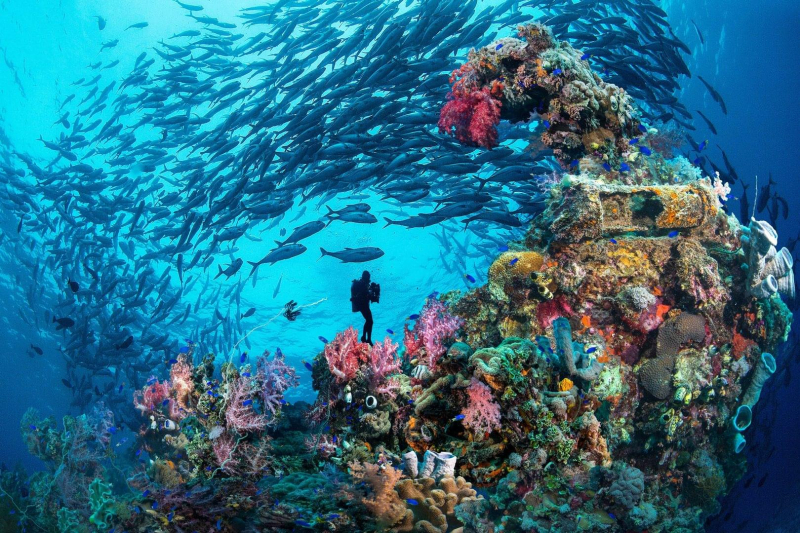
padi.com 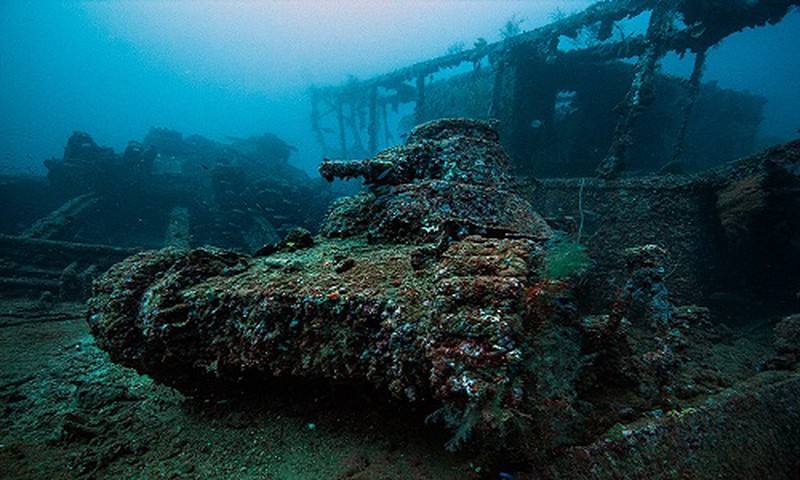
kienthuc.net.vn -
Underwater visibility on and around the island's pristine fringing reef can reach 60 feet in Kosrae. There are more than 172 types of hard coral and 10 types of soft coral, as well as a plethora of beautiful sea anemones, over 250 species of reef fish, and other pelagic species that frequent the reef. Grey reef sharks, which are known to be relatively harmless, are also a common sight in and around the fringing reef. In a single dive, a diver could easily see 30 to 50 different species of fish. The waters of this island paradise are home to a large number of turtles and rays.
Imagine yourself diving and photographing a sheer vertical wall with hundreds of Pacific barracuda encircling you, feel your eyes widen in amazement at the huge and remarkably colorful coral reef systems, or watch the resident spinner dolphins as they jump and twirl for your entertainment. The currents are usually gentle and ideal for underwater photography. You'll wish you had brought a camera if you don't! The water temperature is usually between 28 and 29 degrees Celsius, which is very pleasant.
Location: Caroline Islands, Federated States of Micronesia
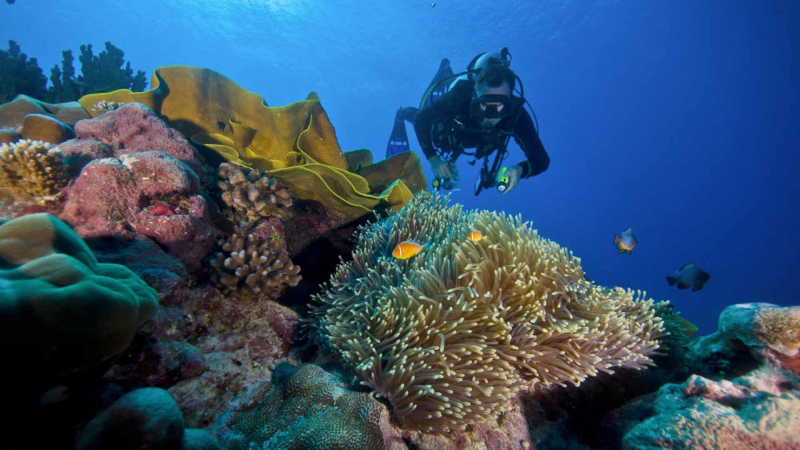
diveadventures.com.au 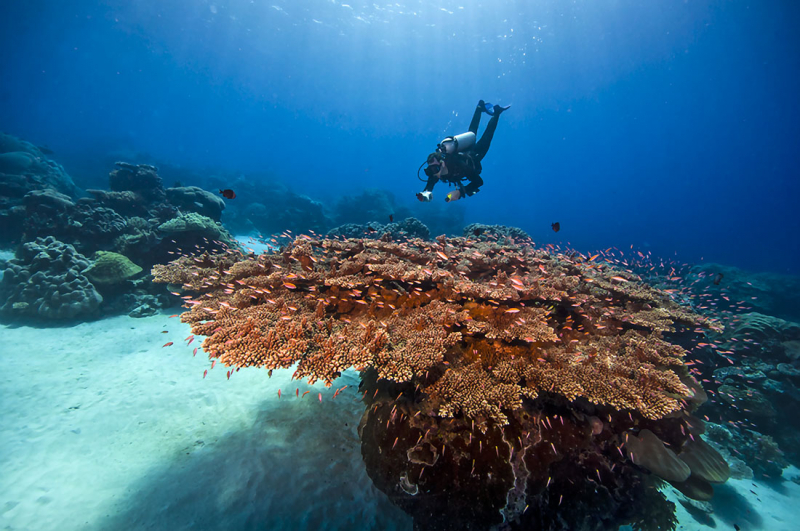
realfoodtraveler.com -
Palau, one of the most beautiful dive sites in Micronesia, is located approximately 800 miles west of Guam. Scuba divers can experience the thrill of diving close to reef sharks, the luxury of drifting in the ocean currents along walls covered in colorful coral, and the opportunity to float in a sea of jellyfish in Palau. Palau is known for its drift diving. Palau diving should be at the very top of anyone's bucket list, with over 1400 species of fish, 500 species of healthy coral, and large pelagic action. Whale sharks, eagle rays, turtles, reef sharks, and the occasional hammerhead are just a few of the amazing species of marine life that can be found in this Micronesian archipelago.
After World War I, Japan occupied Palau and encouraged Japanese immigration until World War II, when the United States took control of the territory. Wreck diving is popular here because of the well-preserved WWII wrecks. Palau can be dived all year, but the dry season, from October to May, is the best time. The water temperature is usually warm, ranging from 81 to 86 degrees Fahrenheit (27 to 30 degrees Celsius), and a 3mm wetsuit will keep you warm all year.
Location: about 800 miles west of Guam, Federated States of Micronesia
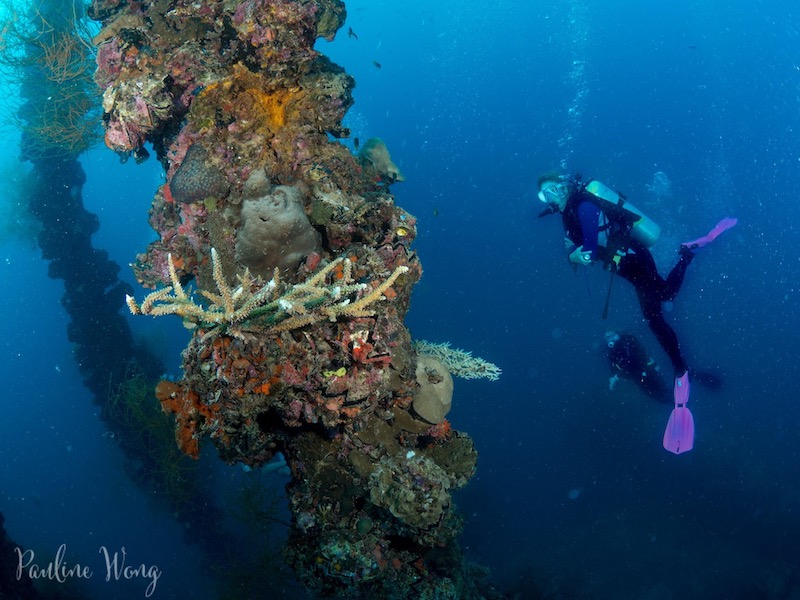
girlsthatscuba.com 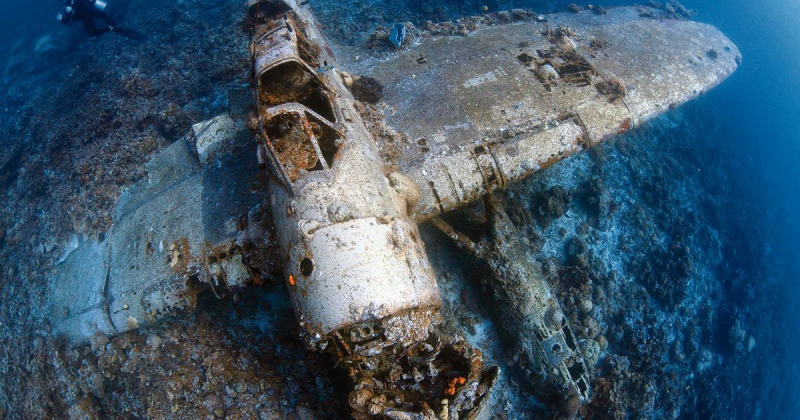
scubadiving.com -
Pohnpei, the capital city of the Federated States of Micronesia, is a stunningly beautiful island with a rich history. The island of Ponhpei is surrounded by a barrier reef. At points in the reef there are channels to the sea that bring nutrients in, and as a result the biodiversity is very high. Divers can choose from a wide variety of dive settings thanks to the large lagoon and numerous passes. Sharks, manta rays, schools of trevallies, and barracuda, as well as the amazing reef ecosystems that support them, can be seen at each pass.
Pohnpei is a tranquil island with pristine dive sites where you can see manta rays, sharks, sea turtles, and barracudas while exploring miles of coral. The enchanting underwater walls and dropoffs are dotted with sea anemones, soft corals, and colorful gorgonian sea fans. A short boat trip can be taken to Ant and Pakin, two neighboring atolls that exude the aura of untouched paradise. The true meaning of pristine diving is revealed here.
Location: Caroline Islands, Federated States of Micronesia
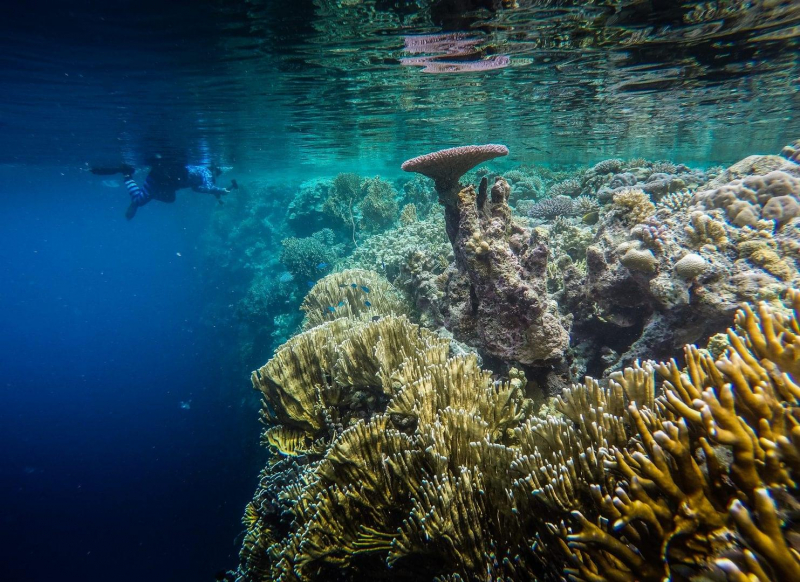
padi.com 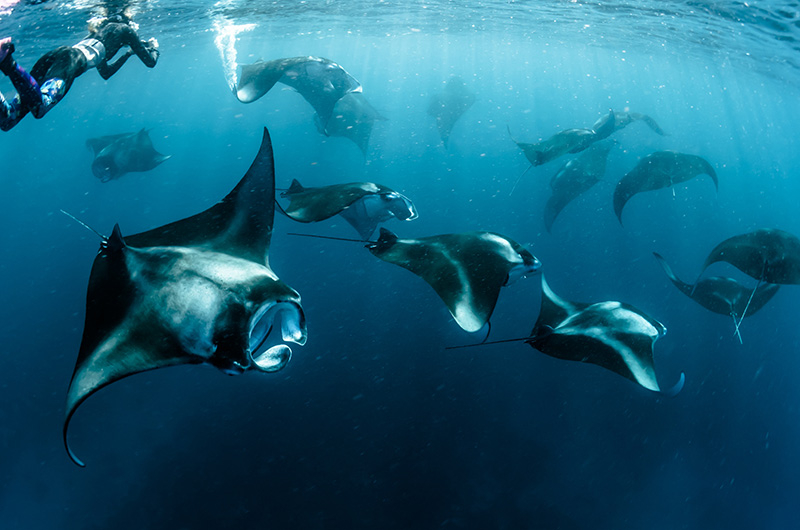
myscubadivinggearguide.com -
Yap is a small, isolated island with a vibrant and colorful culture, as well as intriguing ancient legends and traditions. It's usually visited as a pit stop on the way to Palau, and it's known for its waters, which are home to schools of tuna, dolphins, and reef fish. Divers from all over the world have come to expect to see a wide variety of marine life on the reefs and in the channels. Yap's diving is known for its clear waters and sheer dropoffs.
Yap is one of the most beautiful dive sites in Micronesia and the best place in the world to see manta rays up close and personal. There is no other place on the planet where they can be seen on a year-round basis. Yap has risen to the top of all lists of the most beautiful dive sites in Micronesia and the world as a result of this fact. Local dive guides are well-versed in the island's flora and fauna and are eager to share their knowledge. Yap can be dived all year because of its temperate climate and consistent temperature of 80°F (27°C). The water temperature is also ideal, averaging 82 degrees Fahrenheit (28 degrees Celsius), and a 3mm wetsuit will suffice.Location: Caroline islands located in the western Pacific Ocean
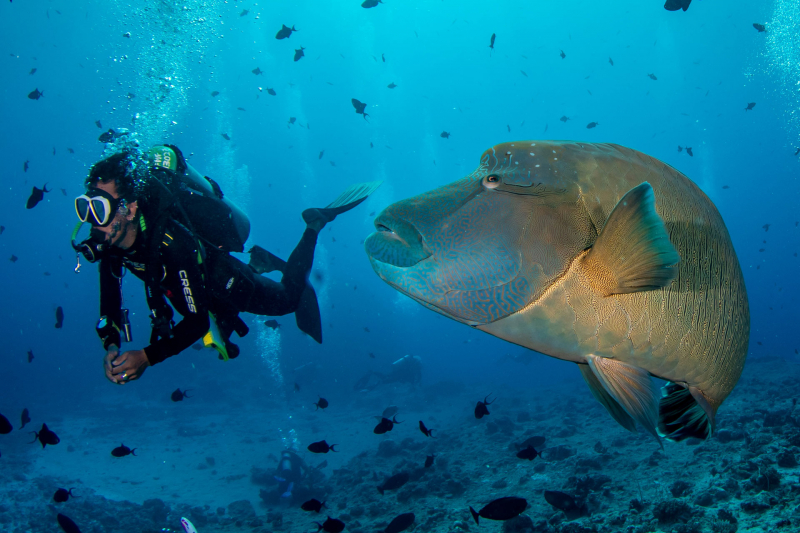
flyandsea.com 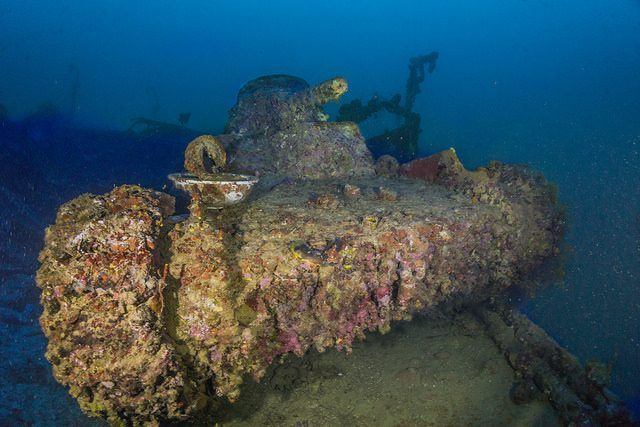
divezone.net -
Considered to be one of the top dive sites in the world, Blue Corner is approximately 8m at its shallowest point and descends to about 30m. Visibility is great on any given day when diving Blue Corner, averaging 16m on the outgoing tide, and a crystal 28m on the incoming tide. Blue corner is a coral peninsula that protrudes out of a steep wall. This is a great dive for advanced divers and if you own a reef hook, this is the place to use it.
The dive begins with a drift dive down the wall; keep an eye out for the large Gorgonian fans, Anemones and Eels hiding within the wall. Once you reach Blue Corner, you will have the ability to hook your reef hook onto the edge and then fly like a kite over the abyss. Whilst hovering over the depths, you will find yourself surrounded by Grey Tip Reef Sharks, White Tip Reef Sharks, Mackerel, Tuna, Napoleon Wrasse, Spotted Eagle Rays and even Turtles. This is an incredible dive that should not be missed.
Location: Blue Corner, Palau, Federated States of Micronesia
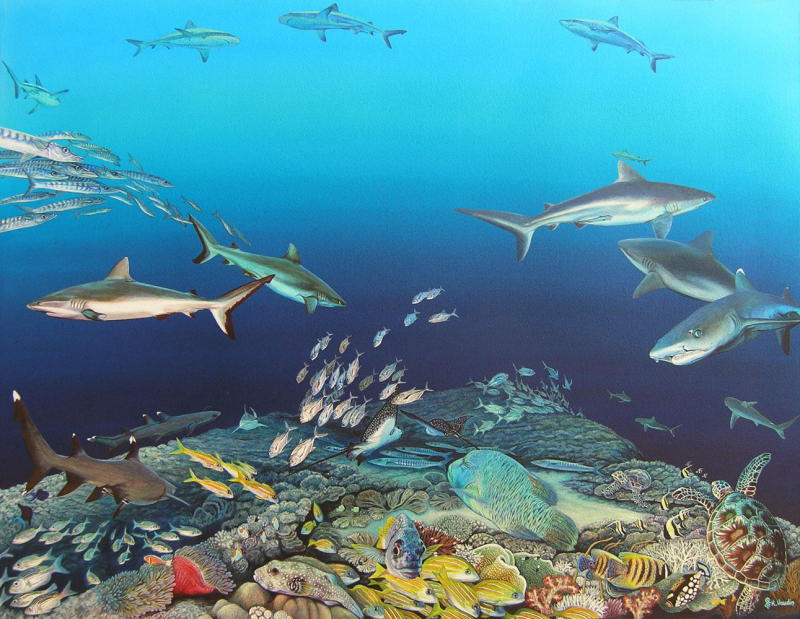
deepimpressions.co.uk 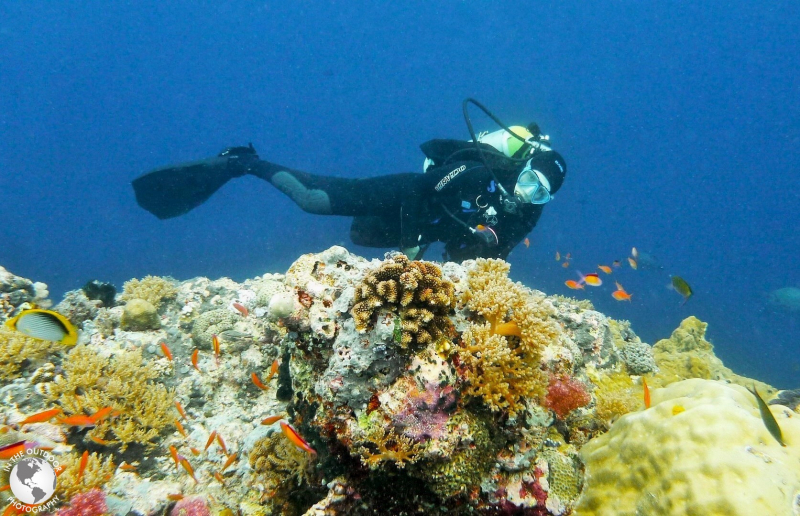
intheoutdoorphotography.com -
The SMS Cormoran/Tokai Maru, which is a combination of two different wrecks from two different world wars, is another popular dive site in Guam. The only dive site where you can dive both wrecks at the same time is this one. Each wreck provides a unique diving experience in and of itself, but being able to dive both at the same time is a once-in-a-lifetime opportunity that should be on every diver's bucket list.
These two wrecks are parked next to each other. The Cormoran is an 88-meter long ship that was scuttled at the start of WW1. The hull is still intact, and there are many structures to explore, as well as a cargo hold filled with car parts, beds, truck parts, and a variety of other items.
Built in 1930, the Tokai Maru served as a passenger ship as well as a long-distance freighter. It's about 134 meters long, with two large engines and a whopping five cargo holds. During WWII, it was sunk by a US submarine and found its final resting place next to the Cormoran. For its age, the Tokai Maru is in relatively good condition. Divers can see bomb damage on the bow of this massive freighter, as well as the torpedo hole that caused its demise in the 4th cargo hold.
Location: Guam, Federated States of Micronesia
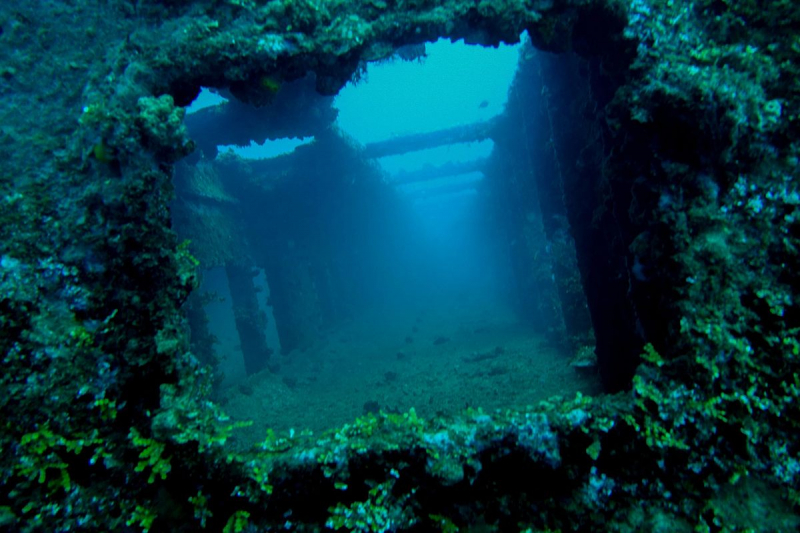
wikipedia.org 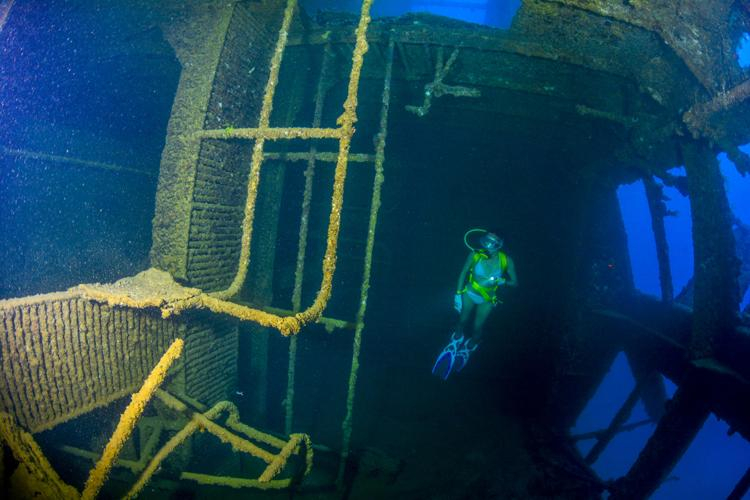
postguam.com -
Mi’il Channel is the dive site to visit if you want to be surrounded by majestic Manta Rays. Manta rays are so common in this area that the locals have given them names. There is a good chance you'll see other pelagic animals in addition to these incredible marine creatures. The Mi'il Channel and the Manta Ridge area at the channel's mouth are what made Yap one of the world's most famous diving destinations. Mantas can be found all year at this location.
The channel's bottom is made up of sand, coral, and rubble, with vertical coral walls. Because of the strong currents, this dive is not recommended for inexperienced divers. The best time to dive this channel is on an incoming tide, as it makes for a spectacular drift dive with both sides of the channel visible as you fly down the middle. You'll see a variety of reef fish, including Humphead Parrot Fish, Large Barracuda, Reef Sharks, Eagle Rays, and Hawksbill Turtles, in addition to the magnificent Manta Rays. Lobster and incredible Octopi can be found in all the nooks and crannies, so keep an eye out.
Location: Yap, Federated States of Micronesia
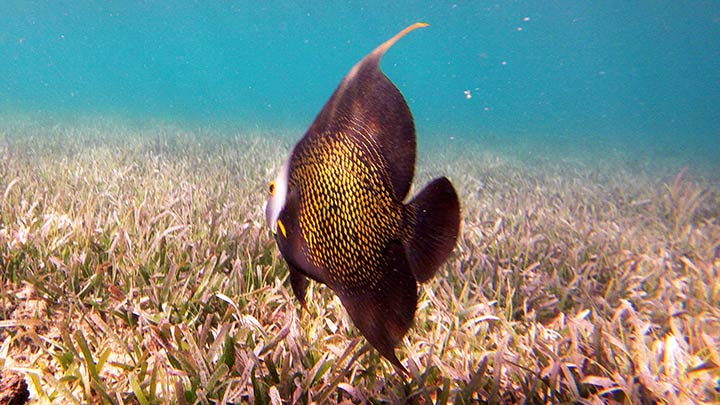
snorkelingdives.com 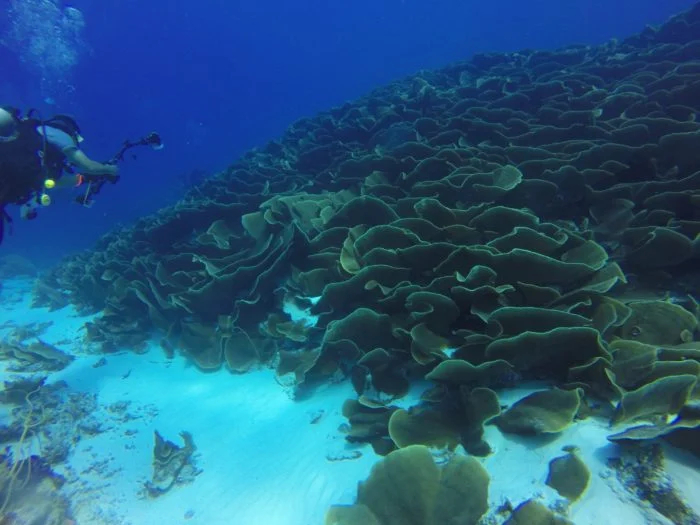
deeperblue.com -
Ngerumekaol Pass is another name for this channel. It is known as Ulong Channel because of its close proximity to Ulong Island. Because of its beautiful beaches and historical significance, Ulong Island is a great place for a picnic. On the island's high cliffs, ancient Palauans carved a series of petroglyphs. The Ulong Channel is regarded as one of the world's best drift dive sites. The entrance to the Ulong Channel is full of beautiful coral formations, and once the tide comes in, you can see the many sharks feasting on the fish that had been stranded in the channel after the tide had gone out.
The currents at Ulong Channel can be unpredictable, and have been known to change dramatically mid-dive. This dive site is only recommended for advanced divers. Stay close to your guide, as you may need to change direction. The best time to dive the Ulong Channel is during an incoming tide, when the current is strongest and visibility is clearest, stretching for more than 30 meters. As you pass by the western side of Ulong Island, make sure your Dive Guide points out the petroglyphs.
Location: Palau, Federated States of Micronesia
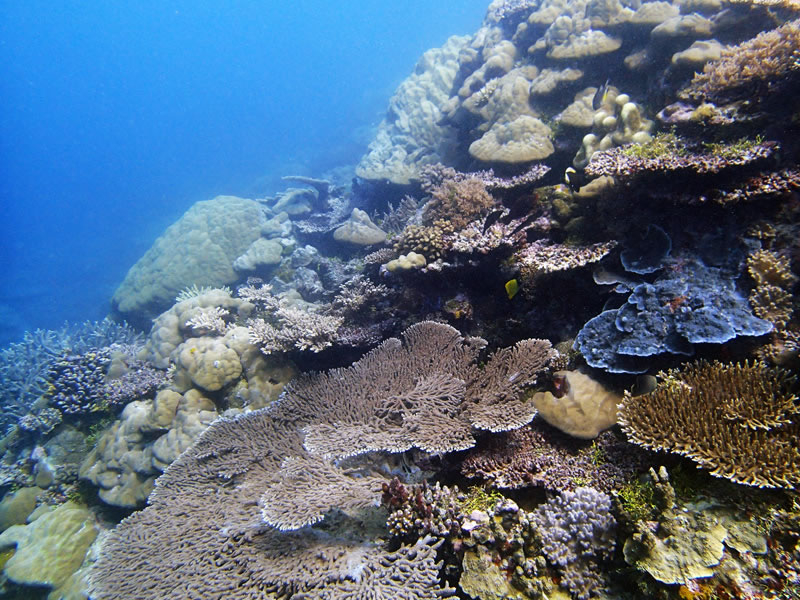
livingoceansfoundation.org 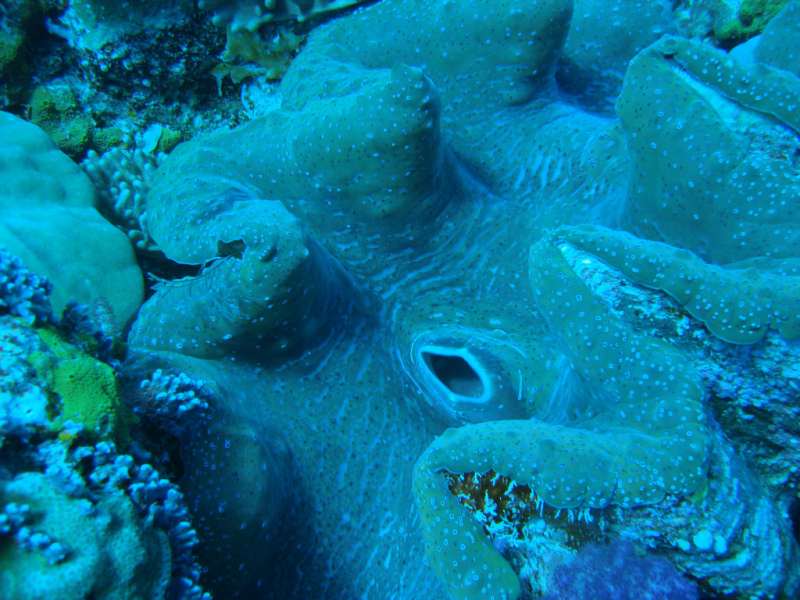
loren-jim.com -
JAKE Seaplane is a WWII Japanese Navy floatplane wreck that is relatively shallow. It is an incredible dive site that should not be overlooked. The location is well-known, and photographs of the plane resting on the seafloor can be found on the internet and in many dive magazines. This low-flying reconnaissance seaplane is almost totally intact and was discovered from the surface, by a Palauan fisherman in 1994. It's one of Palau's few JAKEs, and it's a spectacular sight.
JAKE Seaplane is resting on a large coral platform about 15 meters below the surface. Stag horn, lettuce, table and brain corals, as well as a variety of soft corals, surround it. Many artifacts, such as radios, ammunition, and a small bomb inside the cockpit to the right of the aft seat, still exist inside and around this seaplane. Please do not take any artifacts. Live ammunition can be found on this dive site, as well as all ship and plane wrecks in Palau waters. However, due to the age of the bullets, bombs, mortars, and other historical artifacts, they are very unstable and can explode, so you should be careful with them.
Location: Palau, Federated States of Micronesia
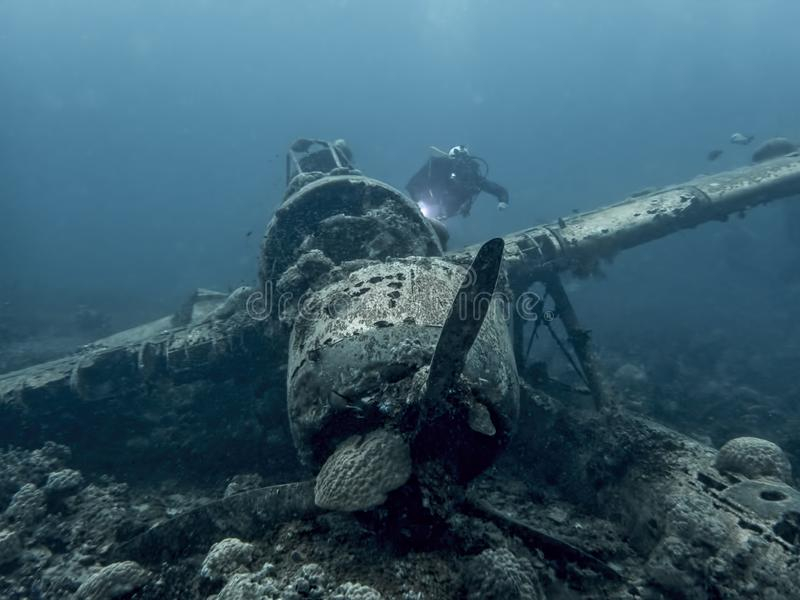
dreamstime.com 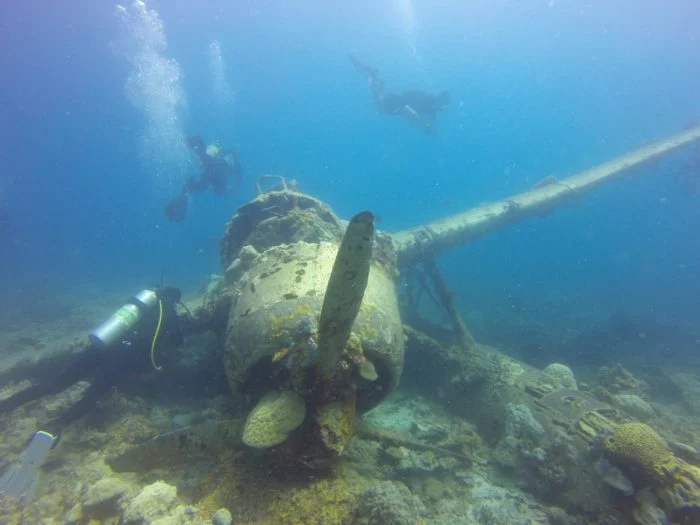
deeperblue.com -
The Yap Caverns consist of a series of swim-troughs, tunnels, caverns and canyons, notched out of the coral wall, in the shallower depths of an amphitheater-shaped dive site. This location is home to a large number of White Tip Reef Sharks who use it as a resting spot. Grey Reef Sharks, which are far more active than White Tips, can also be found at this dive site, near the caverns' entrance.
If you are a diver who enjoys photographing nudibranchs, this is the place for you. You can spend hours photographing nudibranchs in Yap's shallow waters. Yap Caverns is also home to the richest reef and wall diving offering the strongest diversity at any single dive site. The dominant animals are whitetip and grey reef sharks, abundant coral, pelagic fish, schools of bumphead parrotfish, eagle rays, turtles, scorpion leaf fish, dragonettes, blennies with shark, eel, and big fish cleaning stations, and dragonettes, blennies with cleaning stations for sharks, eels, and big fish.
Location: Yap, Federated States of Micronesia
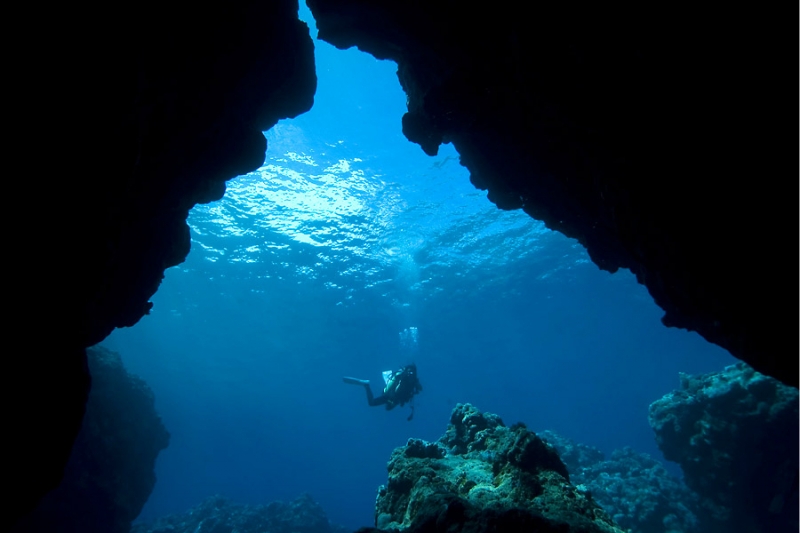
diversiondivetravel.com 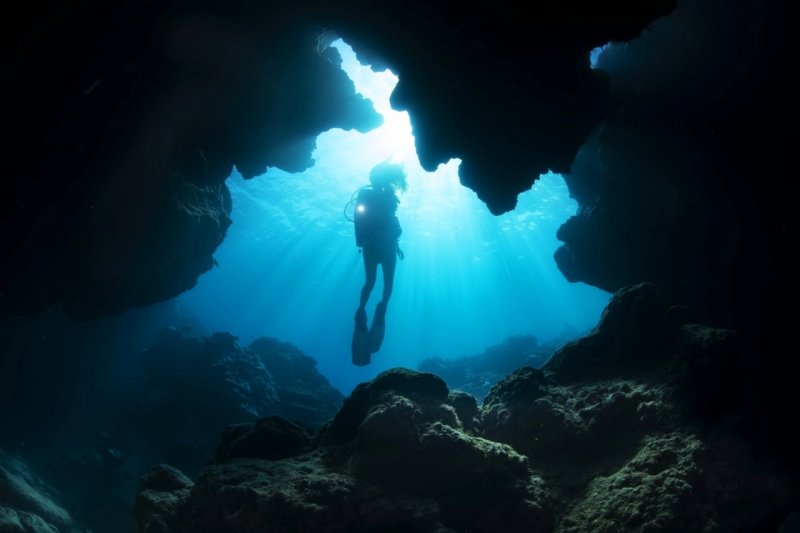
posterazzi.com














